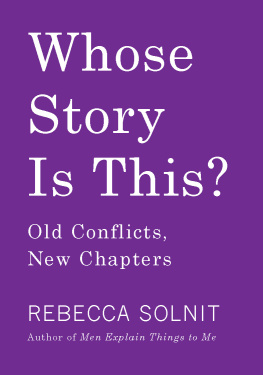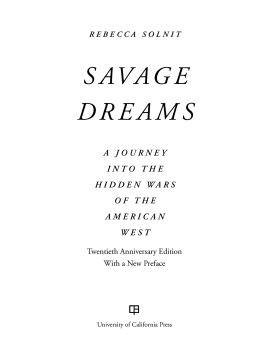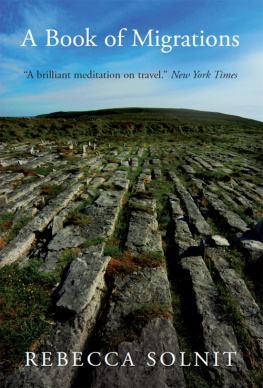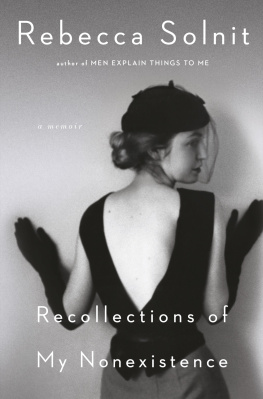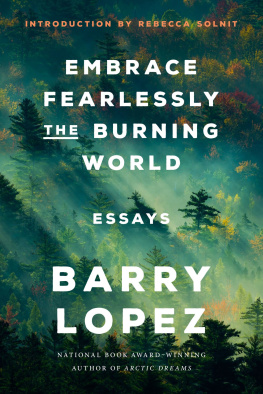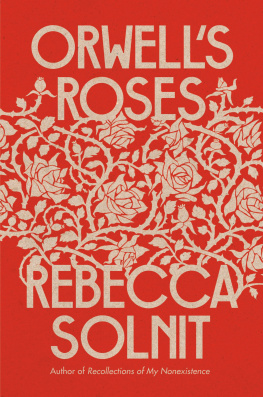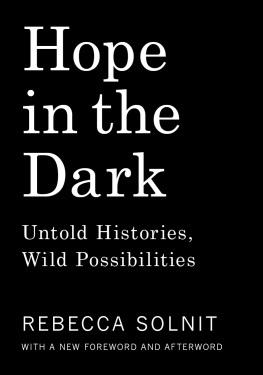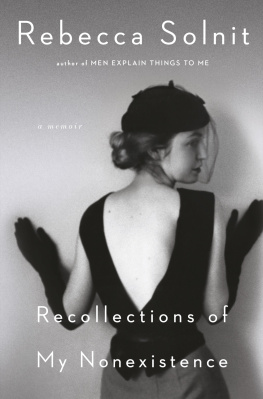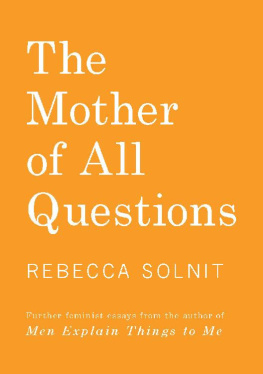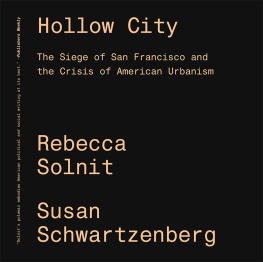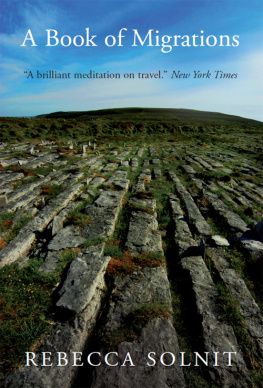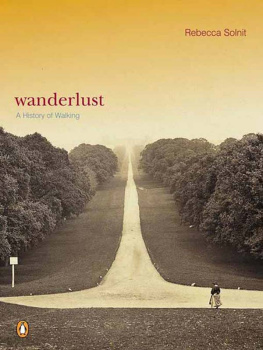Whose
Story
Is This?
Old Conflicts, New Chapters
Rebecca Solnit

2019 Rebecca Solnit
Published in 2019 by
Haymarket Books
P.O. Box 180165
Chicago, IL 60618
773-583-7884
www.haymarketbooks.org
ISBN: 978-1-64259-077-7
Distributed to the trade in the US through Consortium Book Sales and Distribution (www.cbsd.com) and internationally through Ingram Publisher Services International (www.ingramcontent.com).
This book was published with the generous support of Lannan Foundation and Wallace Action Fund.
Special discounts are available for bulk purchases by organizations and institutions. Please call 773-583-7884 or email for more information.
Cover design by Abby Weintraub. Interior maps courtesy of the US Geological Survey.
Library of Congress Cataloging-in-Publication data is available.

Cathedrals and Alarm Clocks
We are building something immense together that, though invisible and immaterial, is a structure, one we reside withinor, rather, many overlapping structures. Theyre assembled from ideas, visions and values emerging out of conversations, essays, editorials, arguments, slogans, social-media messages, books, protests, and demonstrations. About race, class, gender, sexuality; about nature, power, climate, the interconnectedness of all things; about compassion, generosity, collectivity, communion; about justice, equality, possibility. Though there are individual voices and people who got there first, these are collective projects that matter not when one person says something but when a million integrate it into how they see and act in the world. The we who inhabits those structures grows as what was once subversive or transgressive settles in as normal, as people outside the walls wake up one day inside them and forget they were ever anywhere else.
The consequences of these transformations are perhaps most important where they are most subtle. They remake the world, and they do so mostly by the accretion of small gestures and statements and the embracing of new visions of what can be and should be. The unknown becomes known, the outcasts come inside, the strange becomes ordinary. You can see changes to the ideas about whose rights matter and what is reasonable and who should decide, if you sit still enough and gather the evidence of transformations that happen by a million tiny steps before they result in a landmark legal decision or an election or some other shift that puts us in a place weve never been.
I have been watching this beautiful collective process of change unfold with particular intensity over the past several yearsgenerated by the work of countless people separately and together, by the delegitimization of the past and the hope for a better future that lay behind the genesis of Occupy Wall Street (2011), Idle No More (2012), Black Lives Matter (2013), #MeToo (2017), and the new feminist surges and insurgencies, immigrant and trans rights movements, the Green New Deal (2018), and the growing power and reach of the climate movement. In the US, advocacy of universal healthcare, the elimination of the Electoral College, the end of the death penalty, and an energy revolution that leaves fossil fuels behind have gone from the margins to the center in recent years. A new clarity about how injustice works, from police murders to the endless excuses and victim-blaming for rape, lays bare the machinery of that injustice, makes it recognizable when it recurs, and that recognizability strips away the disguises of and excuses for the old ways.
My formative intellectual experience was, in the early 1990s, watching reactions against the celebration of the quincentennial of Columbuss arrival in the Americas and the rise in visibility and audibility of Native Americans that radically redefined this hemispheres history and ideas about nature and culture. That was how I learned that culture matters, that its the substructure of beliefs that shape politics, that change begins on the margins and in the shadows and grows toward the center, that the center is a place of arrival and rarely one of real generation, and that even the most foundational stories can be changed. But now I recognize its not the margins, the place of beginnings, or the center, the place of arrival, but the pervasiveness that matters most.
We live inside ideas. Some are shelters, some are observatories, some are windowless prisons. We are leaving some behind and entering others. At its best, in recent years, this has been a collaborative process so swift and powerful that those paying closest attention can see the doors being framed, the towers arising, the spaces taking shape in which our thoughts will resideand other structures being knocked down. Oppressions and exclusions so accepted theyre nearly invisible become visible en route to becoming unacceptable, and other mores replace the old ones. Those who watch with care can see the structure expanding so that some of those who object or ridicule or fail to comprehend will, within a few years, not even question their lives inside those frameworks. Others try to stop these new edifices from arising; they succeed better with legislation than with imagination. That is, you can prevent women from having access to abortions more easily than you can prevent them from thinking they have the right to an abortion.
You can see change itself happening, if you watch carefully and keep track of what was versus what is. Thats some of what Ive tried to do over the years, in this book and others: to see change and understand how it works and how and where each of us has power within it. To recognize that we live in a transformative time, and that this process will continue beyond what we can now imagine. Ive watched the arising of new ways of naming how women have been oppressed and erased, heard the insistence that the oppression and erasure will no longer be acceptable or invisible. Often, even things that impacted me most directly became clearer through this process, carried out by many of us together. Ive seen many writers express versions of the same general principles, seen the ideas catch on, spread, become incorporated into conversations about what is and should be, and sometimes Ive been one of those writers. To see it unfolding is exhilarating and sometimes awe-inspiring.
This is a time in which the power of words to introduce and justify and explain ideas matters, and that power is tangible in the changes at work. Forgetting is a problem; words matter, partly as a means to help us remember. When the cathedrals you build are invisible, made of perspectives and ideas, you forget you are inside them and that the ideas they consist of were, in fact, made, constructed by people who analyzed and argued and shifted our assumptions. They are the fruit of labor. Forgetting means a failure to recognize the power of the process and the fluidity of meanings and values.

